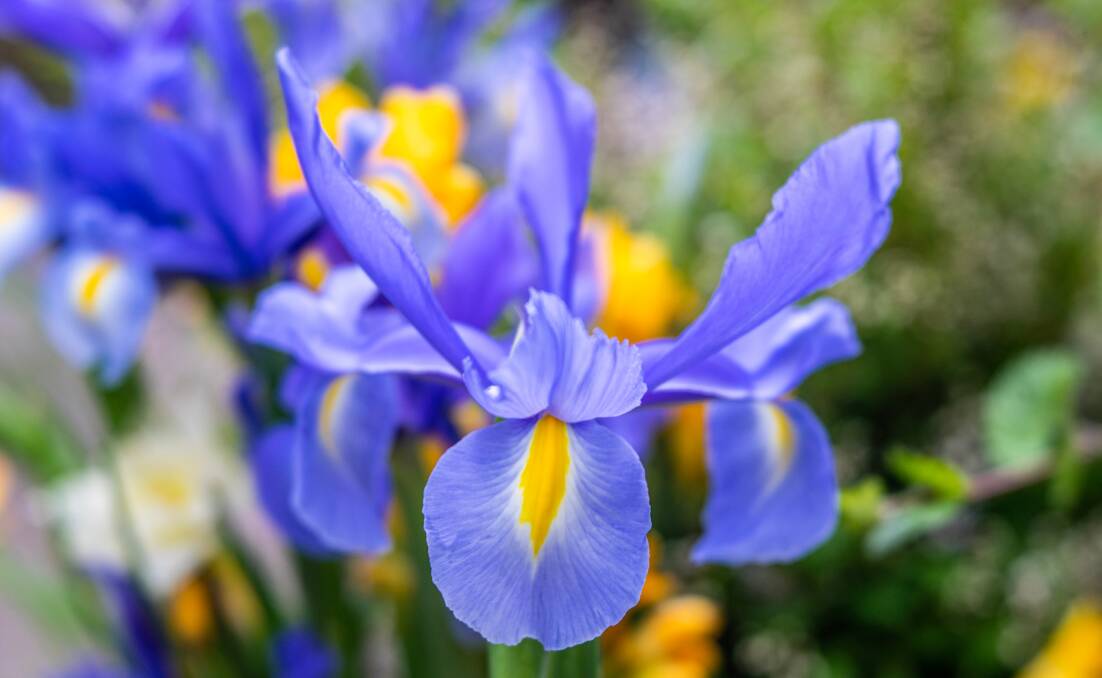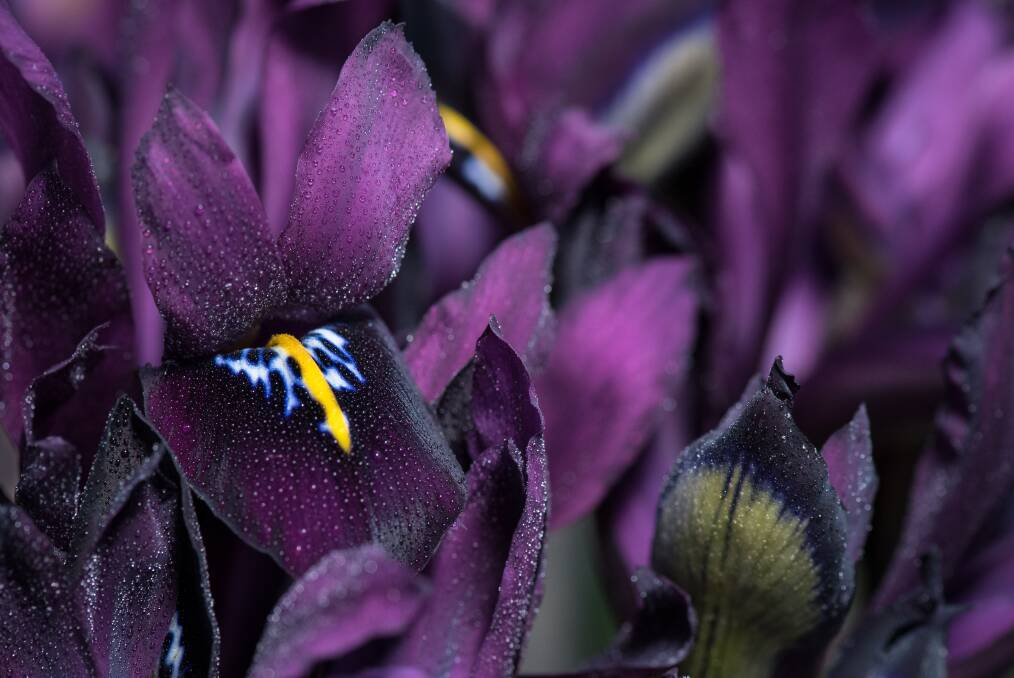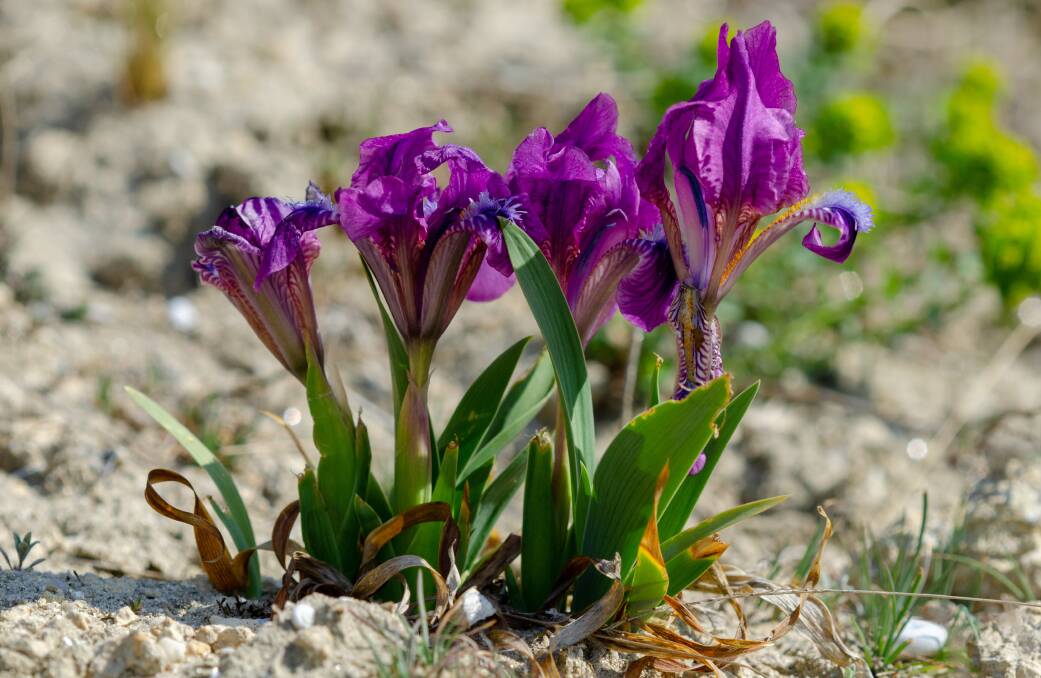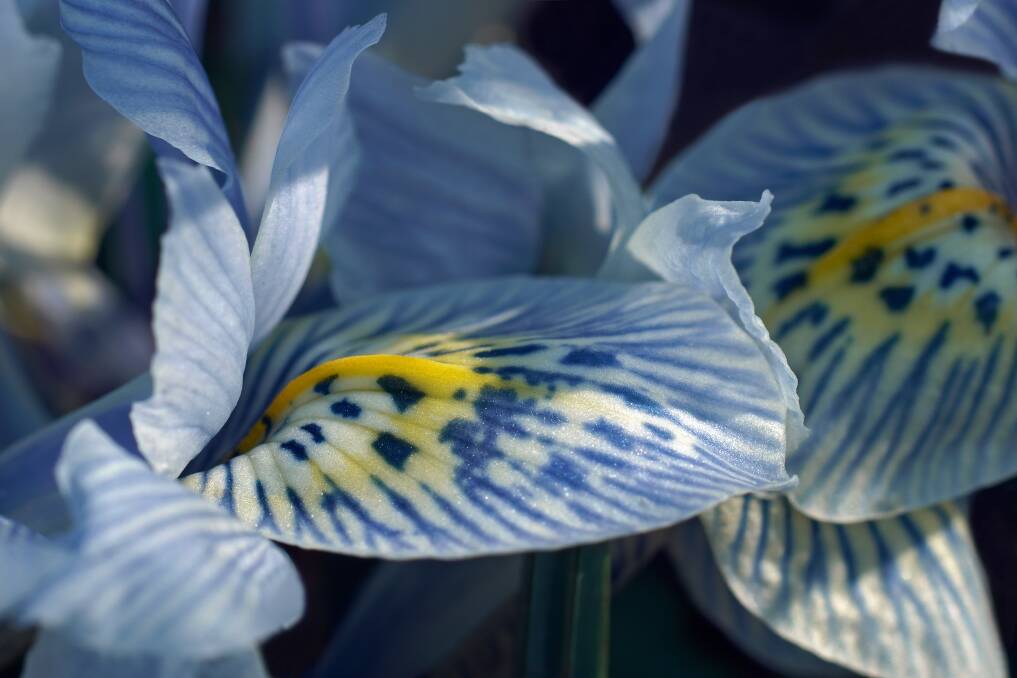
Irises have exceptionally beautiful flowers in many colours, combinations and patterns, making them one of the most elegant and desirable plants to grow.
Subscribe now for unlimited access.
or signup to continue reading
They are especially vibrant in the spring and summer garden where they put on a powerful display planted in large groups, edging borders, containers or as foreground plants to complement small shrubs.
Irises range in heights from the tall-bearded types with stems up to 150-centimetres high to the diminutive reticulates and the dwarf-crested irises that grow to about 15cm tall.
The tall bearded iris is probably the most popular and widely grown.
This stately plant has broad, sword-like leaves that rise from a rhizome in a fan shape and has the characteristic beard which is the thick line of fine hairs which fall over the lower petals.
The dwarf bearded iris is very effective for permanent edgings, mass grouped in borders and rock gardens or as a ground covering on dry banks.
These must have full sun and very well drained soil.
The beardless iris comes in many forms including sibirica, pseudacorus and kaempferi.
Although they prefer a rich, fertile soil in a sunny, wind protected position, they will grow happily along the margins of ponds or ornamental water features provided they get plenty of water.
Iris japonica with small lavender flowers fringed with a tiny orange tipped white crest prefers some partial shade.
These irises are vigorous, clump forming plants that need to be divided every three years.

Bulbous iris are mostly European in origin and include varieties known as English, Spanish and Dutch.
Many have been crossed, so there are numerous varieties to choose from but the Dutch iris is probably the most widely grown, with flowers ranging from cream, white, yellow and gold, vivid blue to bi-colours and a striking grey with yellow standards.
The dainty little reticulata iris can be grown indoors with several in a bowl then planted out into the garden in a well drained, sunny position when flowering has finished.
The pale blue to purple flowers with white or yellow highlights look most attractive arranged in bold colour groups or in drifts along pathways.
The dwarf crested iris is an interesting type as it has a crest instead of a beard. The soft lavender flowers have a white splotch and an orange or yellow crest on the falls. Grows to about 15cms tall and quickly spreads to form large clumps. Dry tolerant once established.

The Pacific coast iris is a low-growing evergreen that comes in a range of gorgeous shades of white, pink, yellow, gold, purple, red and brown. These tough little plants embrace cold winters and long dry summers.
The Louisiana iris is very adaptable and will grow in shade, part shade or sun and thrives in low areas that retain moisture. Planted in large groups the blue, yellow, purple, pink or white blooms provide an impressive splash of colour, but it excels most as a cut flower.

Diary
October 16: The Australian Plants Society native plant sale is on today from 10.00 am to 2.00 pm at the Max Fry Hall, Gorge Road, Trevallyn. A good range of quality plants for all garden situations.
October 19: The next meeting of the Australian Plants Society Tasmania will be at the Max Fry Hall, Gorge Road, Trevallyn at 7.30pm. Kathryn Pugh will speak on Launceston's natural reserves.
October 20: Launceston Horticultural Society meeting at the Windmill Hill Hall, High Street Launceston, 7.30pm.
November 6: North-West Lilium Society meeting at Penguin Baptist Centre, 130 Ironcliffe Road, 1pm.
Around the garden
Tomato plants come in bush or tree form.
The bush forms grow to a height of about 50 centimetres to 75cm, don't need staking and produce fruit at the end of their branches, whereas tree tomatoes need staking and produce fruit clusters along their stems.
Tomatoes prefer a rich, well-drained soil in a wind protected position that gets at least six hours of full sun a day.
Compost vs mulch
I am often asked the difference between compost and mulch.
Compost is the decayed organic matter of materials such as autumn leaves, straw, animal manures or prunings that have been placed in a bin to decompose. They are usually mixed together until all the matter has rotted down into a light, fluffy dark brown material resembling soil.
Mulch is the term used to describe the placing of a layer of organic or inorganic material over the surface of the soil to suppress weeds and maintain moisture retention.
Organic mulch contains extra nutrients that slowly decompose into the soil. Commonly used mulches include pine needles, wood chips, straw, gravel and shredded leaves.
Now is a good time to mulch the garden.
Versatile shrubs
Virburnums are no fuss, versatile garden shrubs with showy, sometimes fragrant, flowers in spring, many having colourful ornamental berries in late summer, stunning autumn foliage and the deciduous types have a lovely silhouette of bare branches in winter. A shrub for all seasons.
Varieties worthy of a place in the garden include opulus sterile commonly called the snowball tree; odoratissum an evergreen with clusters of fragrant flowers; burkwoodii an evergreen with attractive sweetly scented white flowers; plicatum mariesi is a pyramid-shaped shrub with large lace-cap flower heads and carlessii with small white pom-pom shaped flowers and grows to 1.5 metres high.
Weigelas are also good value as garden shrubs with Eva Rathke and Rosea two outstanding types. Both have masses of trumpet shaped flowers from spring through summer and their dense growth habit make them ideal subjects for hedging projects.
Shades of yellow
Plant some sunflower seeds in a sheltered, sunny position in fertile, moist well-drained soil and in about 12 weeks you will have an awesome display of these large flowered beauties. Colours come in shades of yellow, bronze, cream and red.
Food and shelter
Ornamental grasses with their restrained colours and elegant shapes are excellent background plants for a vast range of perennials.
Grasses also attract wildlife to the garden by providing food and shelter as well as nesting material for birds.













